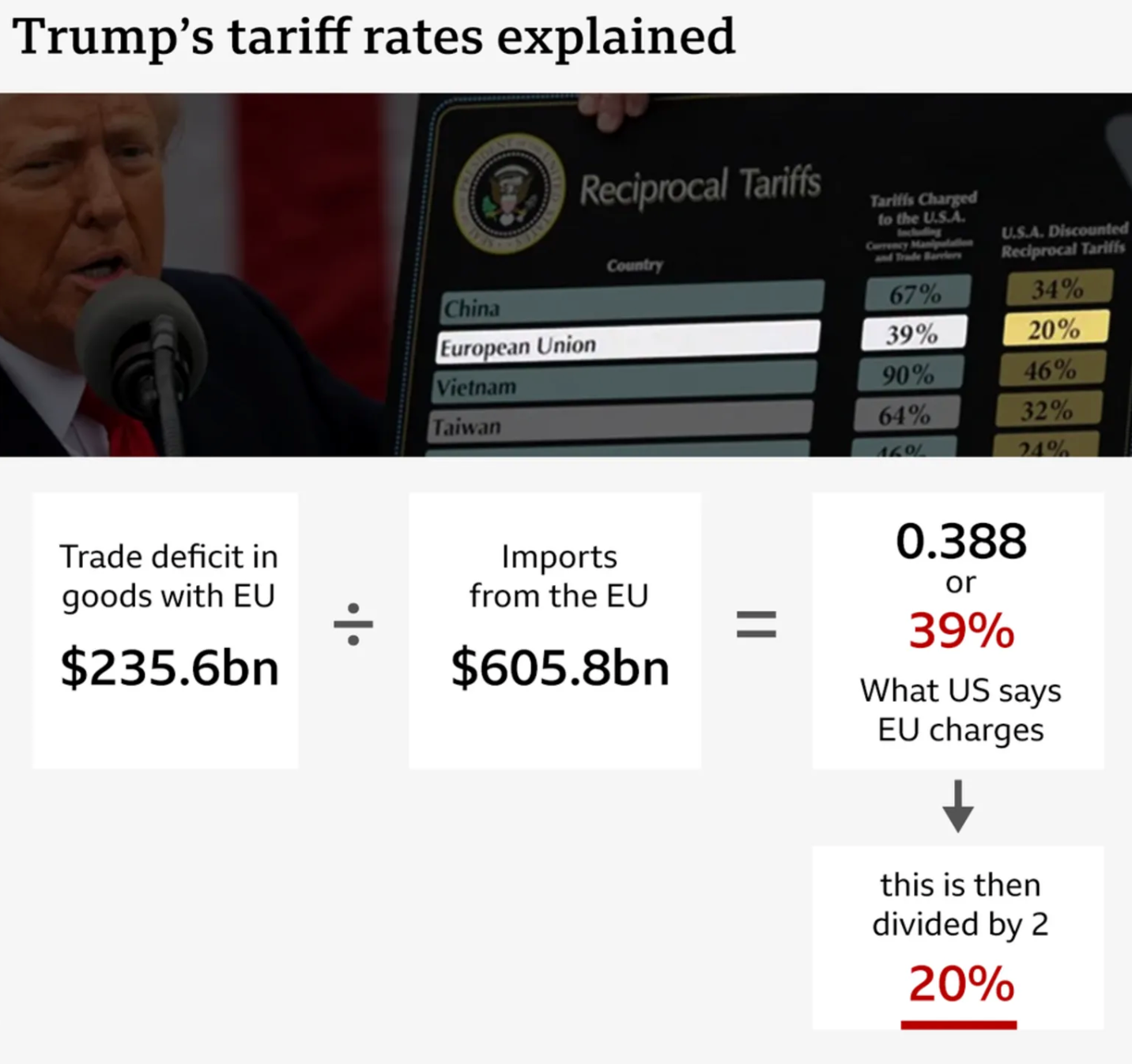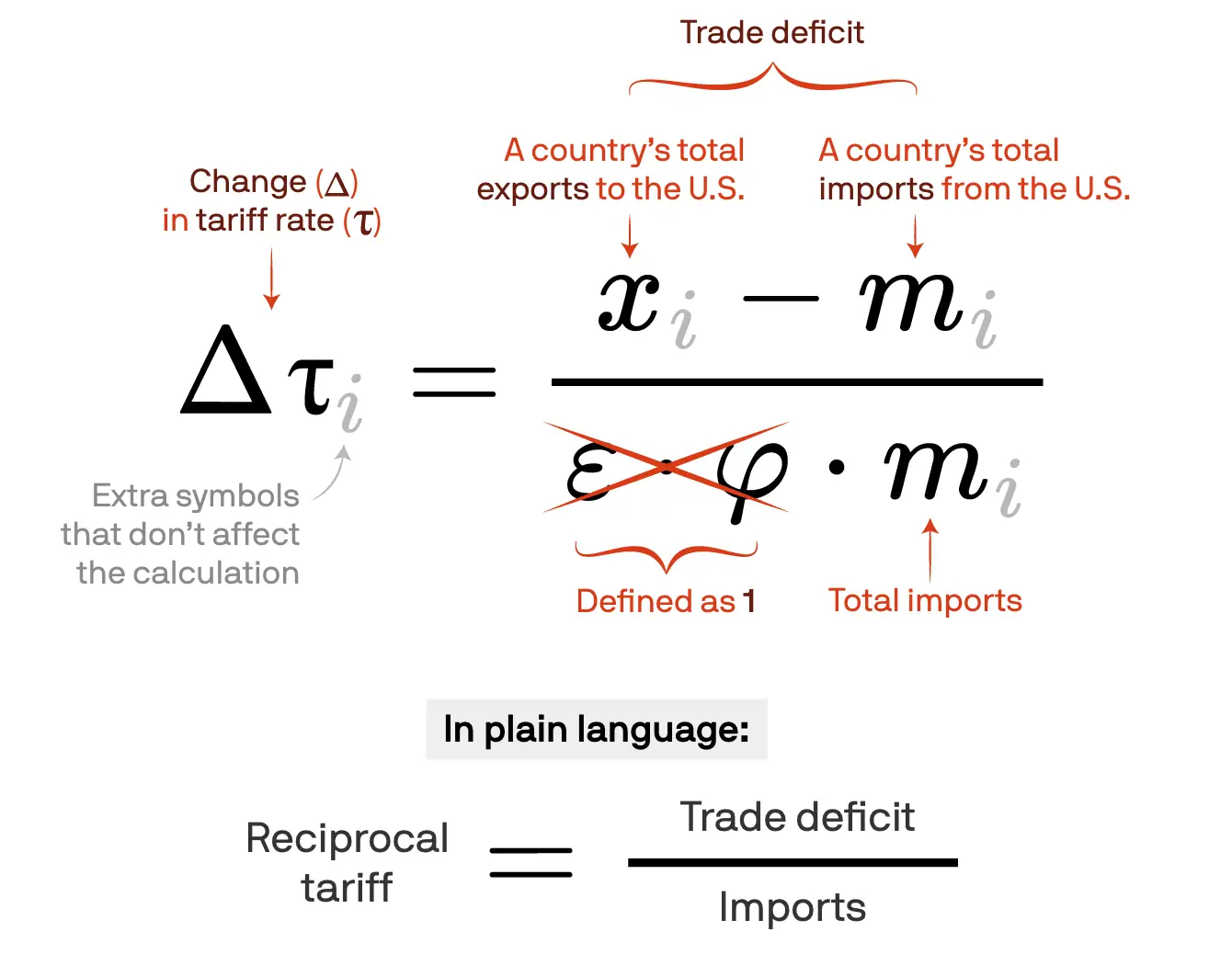Trump’s New Tariff Formula
On April 2, 2025, President Donald Trump announced a new tariff policy, introducing a 10% universal import duty on all goods entering the United States, with higher, country-specific “reciprocal” tariffs for approximately 60 nations.
Where:

The official formula for calculating the “reciprocal” tariffs on countries, as published by the U.S. Trade Representative, is much less complicated than it looks at first glance.
How it works:
- The amount any country’s tariff will rise is equal to our trade deficit with that country, divided by our total imports from that country — with a global floor of 10%.
- On the left hand side of the equation is ∆τ, which is the USTR’s way of saying “this is how much we should raise tariffs.”
- On the right hand side we find x and m, which are the second letters in the words exports and imports, respectively. So x means a country’s exports to the U.S., m means its imports from the U.S., and x-m is the bilateral trade deficit.
- The equation takes the trade deficit and divides it by total imports. The higher the deficit in relation to imports from the U.S., the higher the reciprocal tariff. That’s it.
Between the lines: There’s another term in the equation, ε*φ. But that can be ignored, because the USTR has set ε at 4 and φ at 0.25, so when computed give an overall multiplier of 1 for the imports number. And multiplying by 1 makes no difference at all.

In essence, countries that export significantly more to the U.S. than they import from it will face the steepest tariff hikes. The policy is designed to penalize nations with the largest trade surpluses with America, under the assumption that such imbalances are inherently unfair or economically harmful to the U.S.
On the surface, the formula is refreshingly straightforward. It reflects Trump’s long-standing belief that the U.S. has been taken advantage of by trading partners and that tariffs are an effective tool to level the playing field. By turning the trade deficit into a mathematical basis for action, the policy gives off the impression of logic and fairness.
Stay Ahead with Pacific Square!
Learn more about how Pacific Square can help you expand globally with clarity, confidence, and strategic precision.
Pacific Square will continue tracking these developments across manufacturing, technology, consumer markets, and international relations.
Contact us today for tailored solutions that address your business’s unique needs and discover how we can elevate your operations to the next level.
If you’re a policymaker, business leader, or investor navigating the post-globalization economy, stay tuned. 🔔 Subscribe for future analysis.
